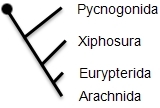
Chelicerata synapomorphies:
Body: cephalothorax (prosoma) + abdomen (ophistosoma)
Chelicers to handle food
Pedipalps as sense organs
Lacks antennae
Pycnogonida
Xiphosura
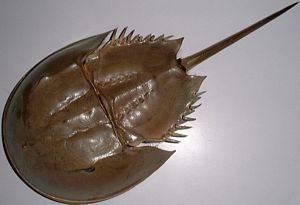 Horseshoe crab
Horseshoe crabEurypterida
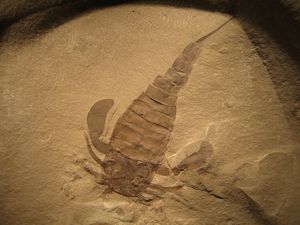
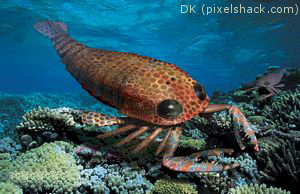 Sea scorpion
Sea scorpionArachnida
Araneae

Araneae synapomorphies:
Poisonous glands on chelicers
Silk glands
Male pedipalps modified for mating purposes
Arachnida - Araneae - Mesothelae
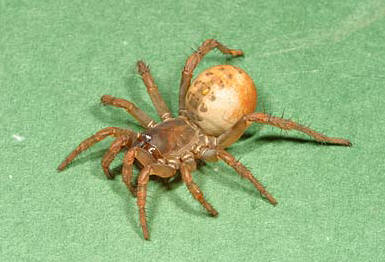 Ryuthela secundaria
Ryuthela secundariaOpistothelae synapomorphies:
Posterior silk glands
Max 6 silk glands
Reduced body segmentation
Arachnida - Araneae - Mygalomorphae
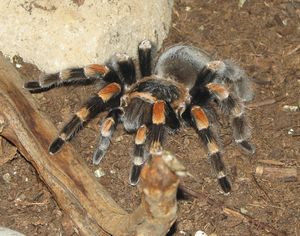 Tarantula
TarantulaSynapomorphy:
Middle silk glands missing
Arachnida - Araneae - Araneomorphae
Synapomorphies:
Chelicers pointing downward
Cribellum
Arachnida - Scorpiones
 Scorpion
ScorpionSynapomorphy:
Pectin (comb-shaped chemical-sensing organ)
Arachnida - Opiliones
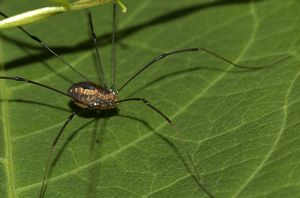 Daddy long legs
Daddy long legsSynapomorphies:
Tubelike mating organ
Stink glands
Arachnida - Acari
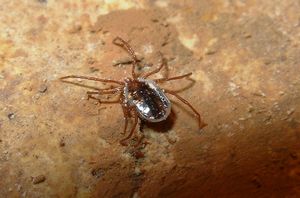 Tick
Tick Mite
MiteSynapomorphy:
Rutella (blade-like scrapers)
Arachnida - Solifugae
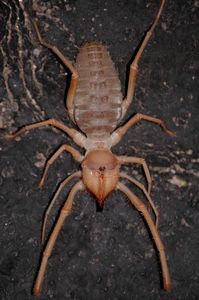 Sun spider
Sun spiderSynapomorphies:
Stout chelicers
Malleoli (flask-formed sense organs)
Arachnida - Pseudoscorpiones
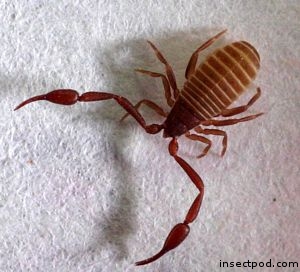 Book scorpion
Book scorpionSynapomorphies:
Advanced nursing behaviour
Special structures in sperm cells
Arachnida - Ricinulei
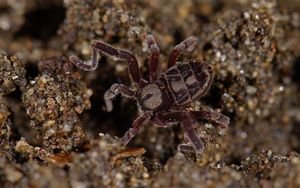 Hooded tickspider
Hooded tickspiderSynapomorphies:
Cucullus (plate covering the chelicers)
3 leg pairs used for mating purposes
Arachnida - Palpigradi
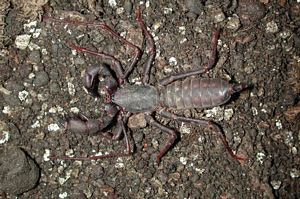 Microwhip scorpion
Microwhip scorpionSynapomorphy:
Mouth placed anterior on cephalothorax
Arachnida - Amblypygi
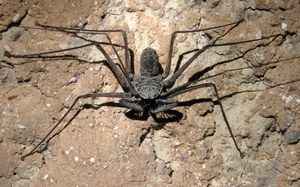 Whip spider
Whip spiderSynapomorphy:
1 pair of legs used as sensing organs
Arachnida - Thelyphonida
Synapomorphies:
Anal glands with acetic acid
Camarostrum (joints that have grown together under the head)
Head to head, hooked together, when mating
Arachnida - Schizomida
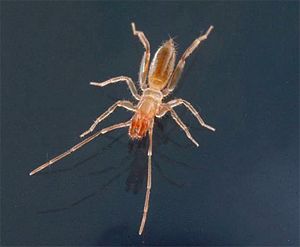
Synapomorphies:
Prosoma in 3 parts
Short flagellum